If you are Learning Spanish and take a quick look at any list of locations around Mexico you’ll immediately notice a pattern: places like Tlatelolco and Chihuaha are not Spanish at all – they come from Nahuatl, the language of the ancient Aztecs. Clearly, we were all speaking something else on this side of the pond before 1492. So how did Mexico start speaking Spanish?
That’s actually a pretty cool history trip. Ready?
- How To Say Cheers In Spanish: 5+ Easy Toasts
- Spanish Curse Words: 20+ Crazy Bad Words In Spanish
- 24 Easy Honduran Slang You Should Learn From The Locals

Do Mexicans Speak Spanish?
Yes, the vast majority of Mexicans actually speak Spanish or Español. In fact, Spanish serves as the de facto national language of Mexico, spoken by over 99% of the population. This makes Mexico the world's most populous Spanish-speaking country.
In addition to Spanish, Mexico is home to a range of indigenous languages. To this day, the National Institute of Indigenous Languages (INALI) in Mexico officially recognizes 68 national languages, which include over 200 linguistic variants of indigenous origin.
Indigenous Languages of Mexico
Below is an overview of the ten most widely spoken indigenous languages in Mexico, including their estimated number of native speakers and primary regions where they are spoken.
| Language | Estimated Number of Speakers | Primary Regions |
|---|---|---|
| Nahuatl | Approximately 1.7 million | Central Mexico, including Veracruz, Puebla, Hidalgo, San Luis Potosí, and Guerrero |
| Yucatec Maya | Around 850,000 | Yucatán Peninsula, encompassing Yucatán, Quintana Roo, and Campeche |
| Mixtec | Over 500,000 | Oaxaca, Guerrero, and Puebla |
| Zapotec | Approximately 450,000 | Oaxaca and surrounding areas |
| Tzeltal | Around 448,000 | Chiapas |
| Tzotzil | Approximately 487,000 | Chiapas |
| Otomí | Nearly 300,000 | Central Mexico, including Querétaro, Hidalgo, and the State of Mexico |
| Mazahua | Over 150,000 | State of Mexico and Michoacán |
| Mazatec | Around 220,000 | Oaxaca and surrounding areas |
| Chol | Approximately 222,000 | Chiapas |
These languages are integral to the cultural fabric of Mexico, with communities striving to preserve and promote their linguistic heritage.
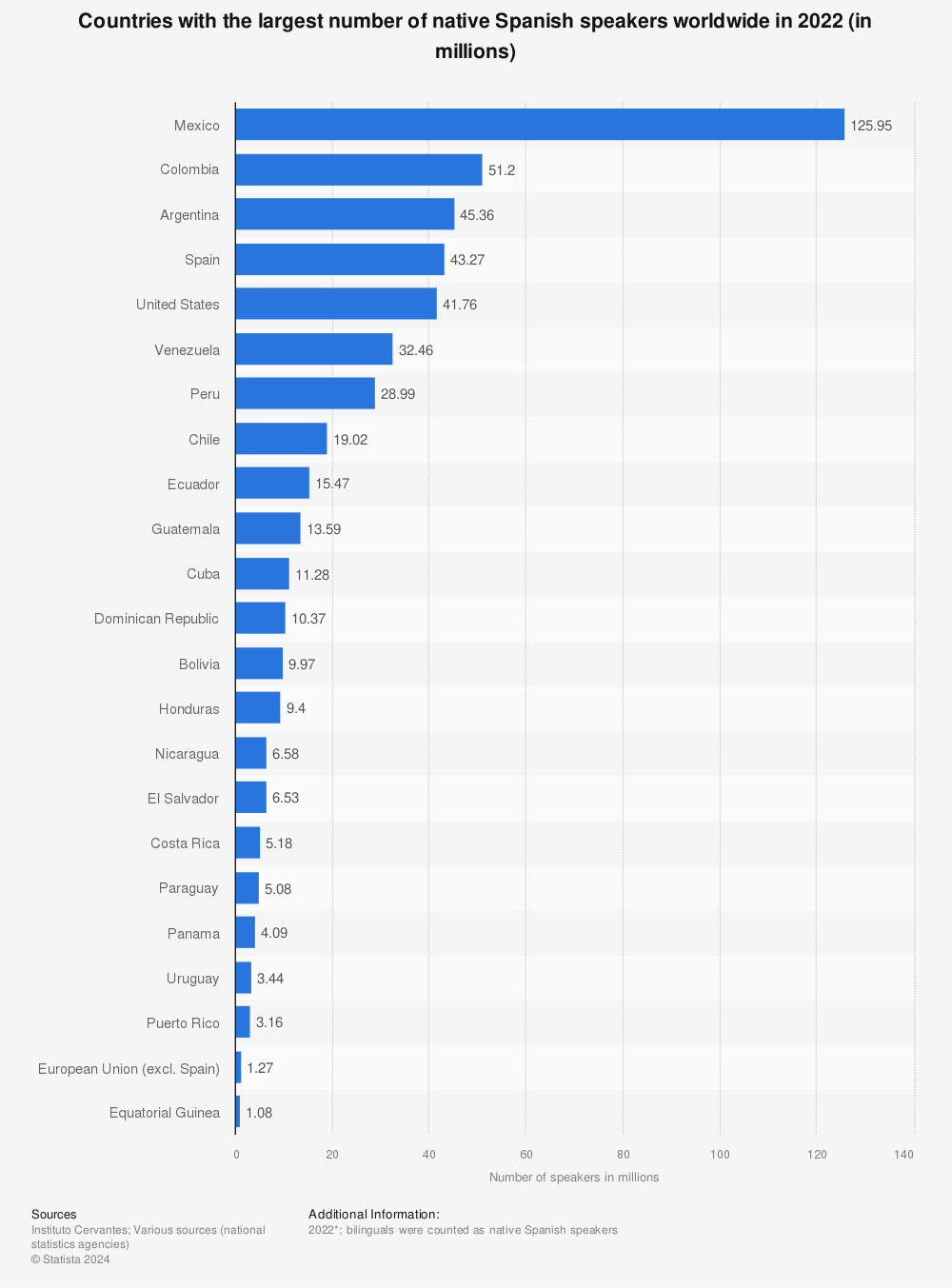
Find more statistics at Statista
Why Do Mexicans Speak Spanish?
The most obvious reason why Mexicans started speaking Spanish was because it was a former Spanish colony. Spanish General Hernán Cortes arrived in what is now Mexico City in 1519. By 1521, they had captured Tenochtitlán, the Aztec capital, and established Mexico City on its ruins.
During the colonial period, which lasted until 1821, Spanish authorities implemented policies to spread their language and culture. Spanish became the dominant language in governance, education, and religion, often at the expense of indigenous languages.
After Mexico gained independence in 1821, Spanish remained the dominant language. The new government continued to promote Spanish for national unity and modernization. While indigenous languages were spoken in various communities, Spanish was the language of official communication and education.
But was it really that simple?
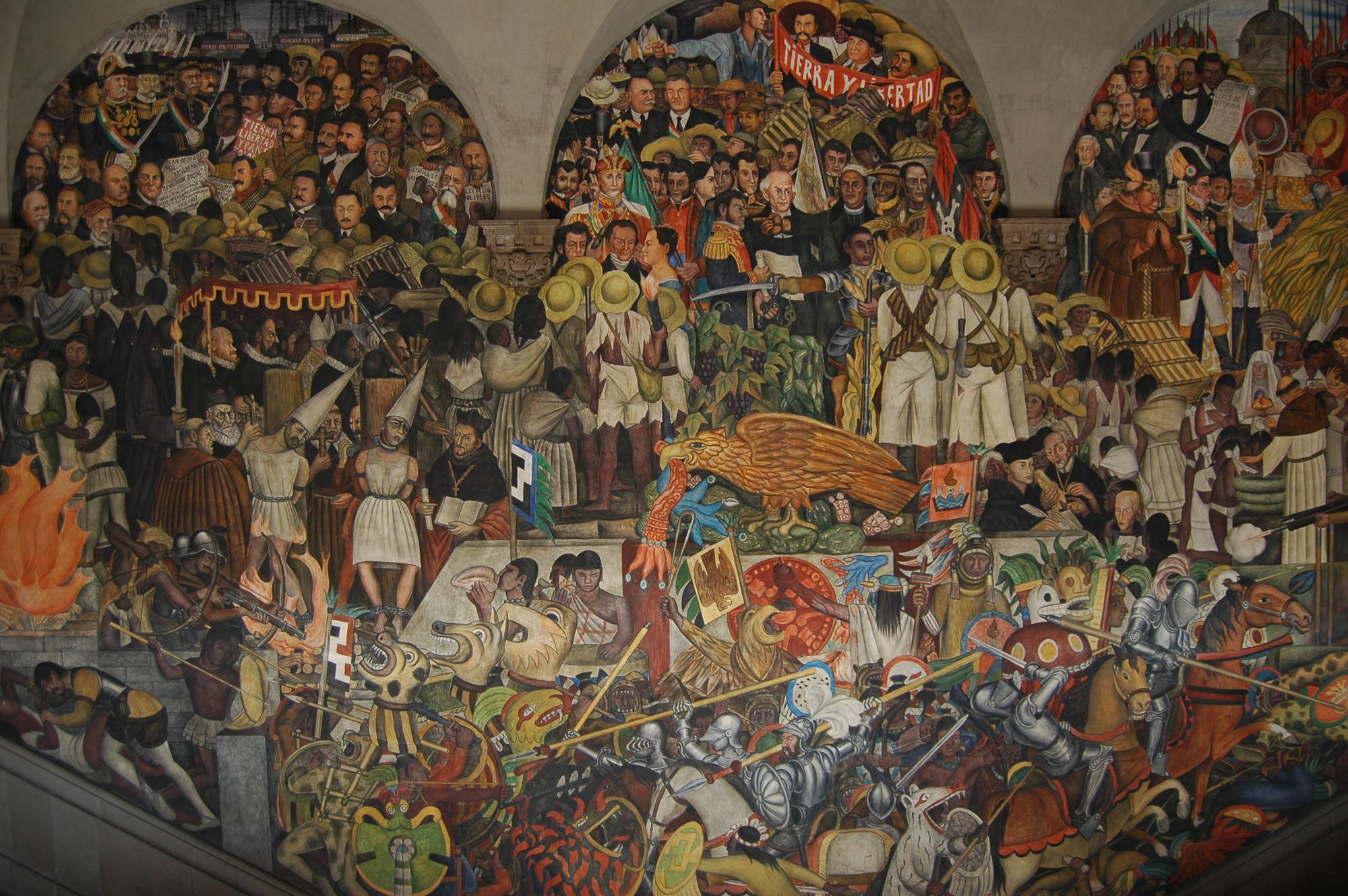
Why Does Mexico Speak Spanish – And Still Does?
If you look at other former colonies, you will note that adopting the conqueror’s language is not automatic. The Philippines returned to Tagalog shortly after they became independent, and India never really lost its rich linguistic diversity.
Compare that to Mexico, where the latest census shows that over 90% of Mexicans consider Spanish to be their mother tongue.
So why did Mexico start speaking Spanish completely?
Due to a combination of historical and political reasons that took place over the course of 300 years. Not all of them were pretty, but they have made Mexico (and Latin America) the cool region it is now.
Mexico and Its Languages: A Love Story
The Spanish held onto Mexico and most of Latin America for over 300 years, starting in the early 16th century and until the 19th century. Compare that to the British Raj, or the time that the Dutch spent in Indonesia, which barely hit the 200 year mark.
Over these 300 years, the Spaniards themselves changed their attitude towards indigenous cultures and languages a few times.
The local languages (and leadership) were in disarray
As solid and magnificent as the city of Tenochtitlan (now Mexico City) was back then, the truth is that the Aztecs were not doing well as a society when Cortes arrived. The Aztecs had just finished conquering a bunch of smaller, local kingdoms, such as the Toltecs, the Olmeps, and the Zapotecs.
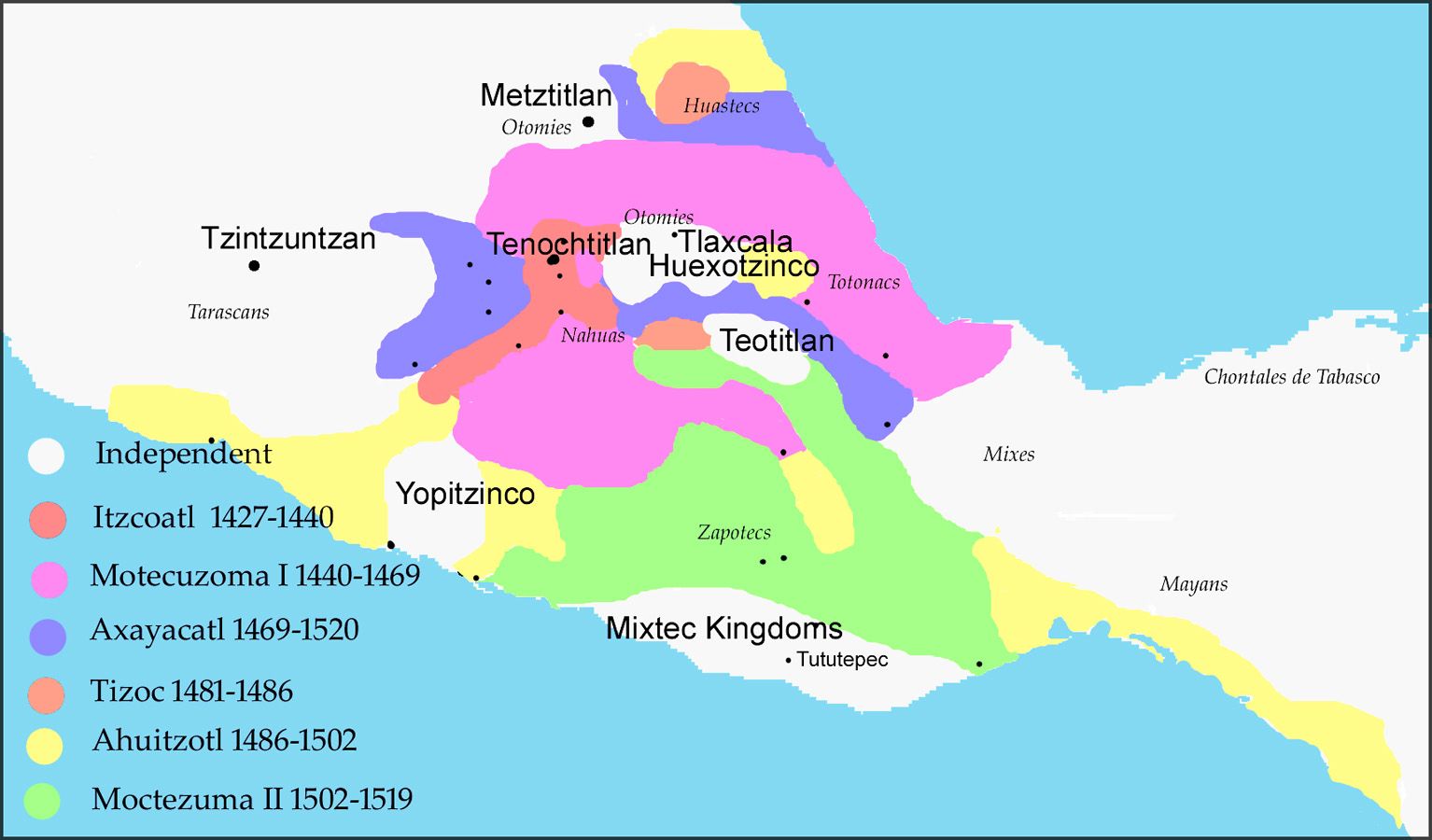
Each one had its own language or dialect. At the time Cortes arrived, the local nobles all knew Nahuatl, but most of the population spoke even older languages.
At first, two languages were easier than twenty
Immediately after the conquest, the Spanish realized that the existing power structures of the Aztec empire could be used to cement their own power. Since they could not deal with dozens of different groups directly, they enlisted the Aztec nobility to act as intermediaries.
In both Mexico and Peru, Spanish generals entered arranged marriages with Amerindian noblewomen. They also established a network of schools to educate the children of old Amerindian nobility into feeling as part of the Kingdom. Here, they learned both Spanish and Nahuatl alongside Spanish law and the Catholic religion.
Meanwhile, priests and missionaries started educating peasant children in Nahuatl rather than in Oltec or Zapotec.
Then, a secret language became dangerous
The Crown's attitude towards local languages changed towards the end of the 18th century.
These were tumultuous years across both Europe and the Americas. Back in Europe, the Spaniards had dealt with a massive war of succession, which had emboldened the Catalan and Aragonese minorities into sedition.
In the Americas, they dealt with a series of indigenous rebellions in both Mexico and Peru. These rebellions were very close to being successful, and they were aided tremendously by the fact that the Amerindians now had a common language that most Spaniards could not understand.
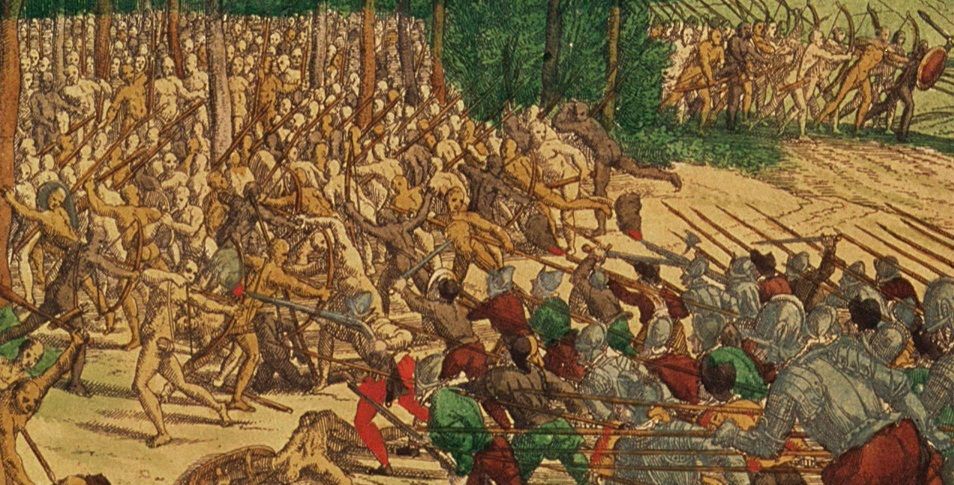
Because of this, in 1770, King Charles IV ordered that all official business had to be conducted in Spanish. The Spanish Crown also began to actively persecute Nahuatl speakers (and Quechua speakers in Peru) under the excuse that these tongues were “savage and pagan”.
Independence didn't improve things
After Mexico gained independence, indigenous languages didn't enjoy the revival that Tagalog did in the Philippines.
The politicians of the early Republic shared many of the same prejudices against Amerindian language and culture with the Spaniards. Throughout most of the 19th century and the start of the 20th Century, most schools punished children from rural villages for using indigenous languages in class. Native Nahuatl and Zapotec speakers were also discriminated against due to their accent.
It wasn't until the late 20th Century that the tide turned, but by then, many native languages had become extinct.
So Are These Languages All Gone?
In short: no.
Approximately six million Mexicans still speak one of 68 indigenous languages. Nahuatl is still spoken by over a million people. Over 100,000 also speak Yucatec, Maya, and Zapotec. However, many others have very few speakers and are in danger of disappearing altogether.
That being said, attitudes are changing at last. The Mexican government is now investing heavily in preserving these languages, tasking linguists with recording their vocabularies.
Meanwhile, the speakers themselves are done with being ashamed, and many are eager to fight to see indigenous languages used again. For example, check out this hip hop artist from Juchitan who raps in Zapotec:
What is the difference between Mexican Spanish and Spain Spanish?
While Mexican Spanish and Spain Spanish (often referred to as Castilian Spanish) are mutually intelligible, they exhibit notable differences in pronunciation, vocabulary, and grammar.
| Feature | Mexican Spanish | Spain Spanish | Example/Notes |
|---|---|---|---|
| Pronunciation | Softer 'z' and 'c' sounds like 's' | 'z' and 'c' pronounced as 'th' | Mexico: "gracias" (gra-see-as) Spain: "gracias" (gra-thee-as) |
| Common Words | - Carro (car) - Celular (phone) - Computadora (computer) - Pluma (pen) |
- Coche (car) - Móvil (phone) - Ordenador (computer) - Bolígrafo (pen) |
Mexican terms often reflect American influence |
| Informal "You" | Uses "tú" almost exclusively | "Tú" and "vosotros" (plural) | Spain uses "vosotros" for informal plural "you," while Mexico sticks to "ustedes" |
| Slang | - Órale (wow/hey) - Chido (cool) - Güey (dude) |
- Vale (okay) - Guay (cool) - Tío/Tía (dude/girl) |
Each country has its unique casual expressions |
| Past Tense Usage | Prefers simple past "Comí tacos" |
Often uses present perfect "He comido tapas" |
Mexican: "I ate" Spain: "I have eaten" |
| Indigenous Influence | Many Nahuatl words: - Chocolate - Aguacate (avocado) |
Arabic influence: - Ojalá (hopefully) - Almohada (pillow) |
Reflects different historical influences |
These distinctions highlight the rich diversity within the Spanish language, shaped by historical, cultural, and regional influences.
How Can You Help?
Often, it feels hard to connect with the culture of a foreign country from afar. It's not impossible, though. Traces of indigenous culture and philosophy can be felt across Mexican culture as a whole.
If you check out any of Lingopie's Mexican content, you are likely to find Nahuatl-based slang and Aztec dishes lurking right behind the plot. By learning to see a country the way its inhabitants see it, you will be able to understand it and appreciate it better, away from clichés and prejudices.
Lingopie, the language learning platform, offers an immersive experience for acquiring Mexican slang. Choose a Mexican TV series or movies to watch with interactive subtitles for instant translations. Lingopie's real-life content exposes you to native slang naturally while enjoying top-rated shows. Practice, imitate, and use this slang in conversations to reinforce learning.
Plus, if you want to travel to Mexico City to research Nahuatl further, it would be extremely beneficial to learn Spanish first – and Lingopie has the materials to help you learn Spanish by immersion without leaving home.

FAQs about the Spanish Language in Mexico
What language did Mexicans speak before Spanish?
Before Spanish, indigenous languages such as Nahuatl, Maya, Mixtec, and Zapotec, among others, were widely spoken in Mexico.
What do they call Mexicans that don't speak Spanish?
Mexicans who don't speak Spanish and primarily speak indigenous languages are often referred to as indigenous people or by the specific name of their language group (e.g., Nahuatl speakers).
How did Spanish come to Mexico?
Spanish was brought to Mexico by Spanish conquistadors and settlers during the Spanish colonization in the early 16th century, starting with Hernán Cortés' expedition in 1519.
Do Mexicans say they speak Spanish or Mexican?
Mexicans typically say they speak "español" (Spanish) rather than "Mexican." The language spoken in Mexico is a variant of Spanish known as Mexican Spanish.
Why is Spanish still spoken in Mexico?
Spanish remains spoken in Mexico due to the long-lasting impact of Spanish colonization. It became the dominant language through government, education, and cultural assimilation, and it continues to be the official language of Mexico.
Why did the Aztecs start speaking Spanish?
The Aztecs and other indigenous peoples in Mexico began speaking Spanish due to the Spanish colonization and conquest of Mexico. The Spanish imposed their language, culture, and authority on the native populations through colonization efforts and religious conversion, leading to the adoption of Spanish as the dominant language over time.
Summing Up
In conclusion, Mexico's transition from indigenous languages to Spanish is a complex historical journey. Thanks to initiatives like Lingopie, there's a renewed focus on preserving indigenous languages. By embracing these languages, we connect with Mexico's history and contribute to their preservation.
So, whether you're exploring Aztec culture, Nahuatl slang, or learning Spanish, language is the key to a deeper appreciation of Mexico's diverse heritage. Dive in, explore, and let language enrich your journey.


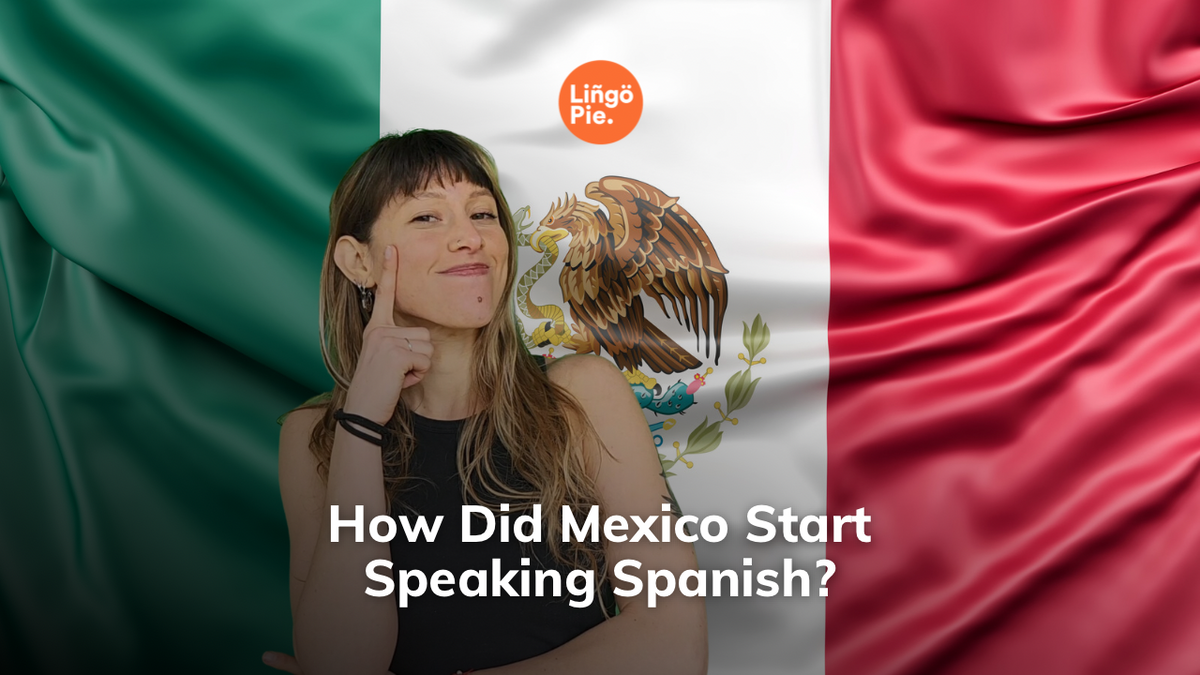


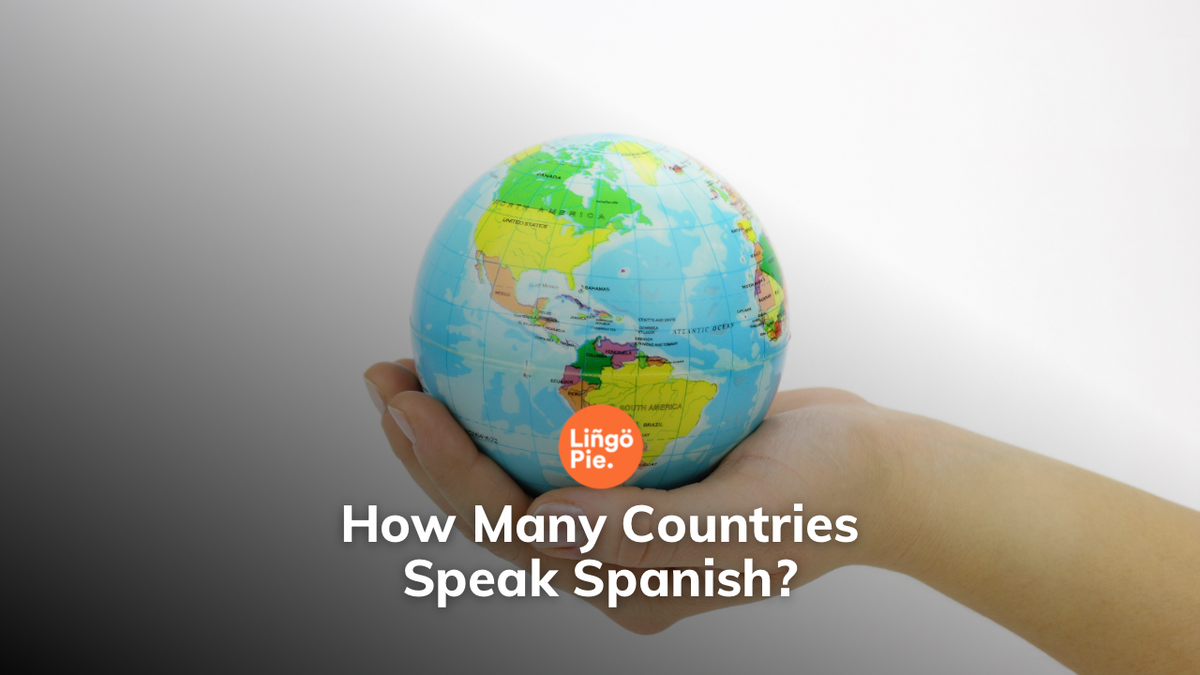
![5 Official Spanish Language Tests To Show Your Proficiency Level [Guide]](/blog/content/images/size/w300/2025/06/Spanish-Language-Tests.jpg)
![Why Memorizing Spanish Words Won’t Make You Fluent [Tips]](/blog/content/images/size/w300/2025/06/how-to-practice-spanish-vocabulary.jpg)
![How to Improve Your Polish Conversation Skills [5 Best Tips]](/blog/content/images/size/w300/2025/06/improve-polish-conversation-skills.jpg)
